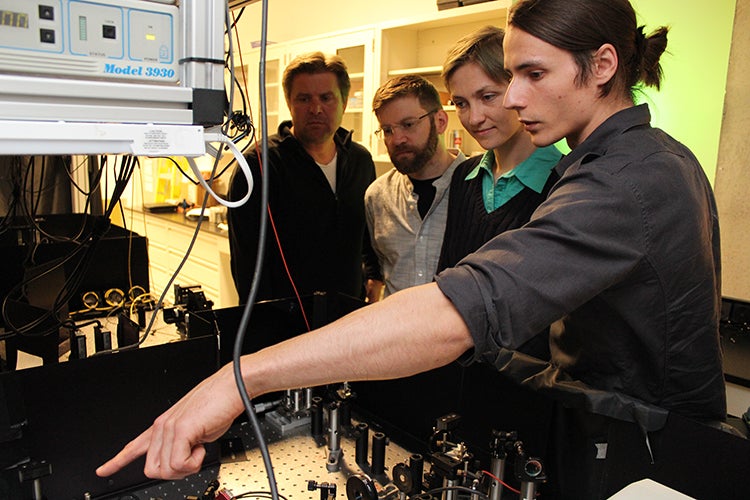Last year, research from the Institute for Quantum Computing (IQC) at the University of Waterloo and the Perimeter Institute for Theoretical Physics (PI) showed that in the quantum world, certain kinds of correlations do imply causation. This line of research has now expanded to the question of whether there are types of causal structures that exist in the quantum world but not in the classical world of our everyday lives.

The paper, Quantum-coherent mixtures of causal relations, published in Nature Communications explains how the team discovered a way to measure and explain the correlations of these quantum-coherent mixtures. The researchers noted that a pair of systems could be correlated if the later system is a transformed version of the earlier one: a cause-effect relationship. Alternatively, the systems might be correlated if prepared in a correlated quantum state: a common cause relationship. The most quantum types of cause-effect and common-cause relations are related to the preservation and generation of entanglement. It is also possible to have a pair of systems related by both cause-effect and common cause mechanisms acting simultaneously. These are the new possibilities that the researchers uncovered.
The researchers used a phenomenon in statistics known as Berkson’s Paradox to define this novel type of combination. It states that if you have two uncorrelated variables, A and B, which are both causes of a third variable, C, and you post-select on a specific value of C, this can induce correlations between A and B.
An example from the paper describes a candidate trying to get hired by an academic institution that requires two important skills: teaching and research. Assuming that these abilities are equally distributed across all candidates, and assuming that a candidate has to be fairly good at teaching and fairly good at research in order to be hired, the candidates who aren’t that good at either are removed from the pool.
When considering the subgroup of successful candidates, someone in that group who isn’t that good at teaching must be really good at research, and vice-versa. The selection criteria induced a negative correlation between teaching and research among the hires. Based on this negative correlation, one should not conclude that all good researchers are bad teachers. To do so is to fall victim to Berkson’s Paradox.
The researchers noted that the strength of the correlations between systems A and B that are induced by the post-selection on C has information about the causal relations between the systems. For instance, if we look at the amount of negative correlations between teaching and research for hires across several academic institutions, we can learn something about the extent to which both skills determine hiring outcomes versus just one or the other being relevant.
A natural question arises when we consider Berkson’s effect in a quantum world: what does it mean when you see entanglement in the induced correlation? The researchers realized that such entanglement can be used as the signature that one has a quantum-coherent mixture of cause-effect and common-cause mechanisms connecting two systems. Returning to the root beer analogy, this is a kind of ice cream float that you can’t get at a classical soda shoppe.
“This could possibly be used as a resource,” said MacLean, a PhD student with IQC and the Department of Physics and Astronomy. “We don’t know this yet, but there are certain things that it could entail for other fields.” Causality is a fundamental concept for those studying epidemiology, genetics and social sciences and the idea of disentangling correlations for causation is very important. “We’ve discovered that the causal structures that are allowed in the quantum world are much richer than in the classical world,” concluded MacLean.
The richer possibilities of coherent combinations of different cause-effect and common cause relations could lead to new insights into how to provide causal explanations of quantum correlations, a task that is made challenging by results such as Bell’s theorem.
"In the near future, the team is also interested in exploring the effect of decoherence on these nonclassical causal relations,” said Resch. “Assessing how robust they are to decoherence and experimental noise will be a necessary step before exploiting them as a resource in quantum information processing and moreover may give more insights on the quantum/classical boundary for causal structures.”